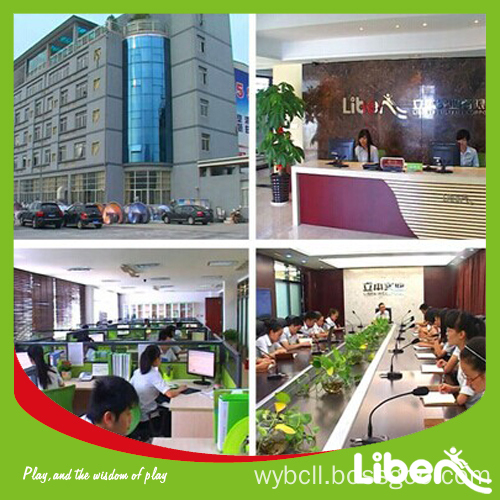Li Keqiang repeatedly stressed the need to redeem the real economy to stop expansion policy
In response to the recent "money shortage" phenomenon in the interbank market, the People's Bank of China said on the 24th that the current liquidity of China's banking system is generally at a reasonable level. The central bank reminded financial institutions to strengthen liquidity management and promote the stability of the monetary environment.
Starting in late May, the “money shortage†that lasted for nearly a month in the interbank market attracted close attention from all parties. Analysts believe that the "money shortage" phenomenon reveals the current idling problem of China's banking system, and reflects the policy intention of allowing funds to enter the real economy.
The central bank does not move: the last push of "money shortage"
June 20 may be a day that many bank money traders often mention in their future careers. On the same day, the overnight repo rate once soared to 30%, and the overnight interbank lending rate of the Shanghai Interbank Offered Rate (Shibor) soared 578 basis points to 13.44%, hitting a high for the year.
“In the history, there were only four time periods in which the bank’s overnight repo rate exceeded 6%, but neither the height of the rise nor the length of the duration could be compared with this time.†Peng, chief economist of CICC Wensheng said.
Economists have found that, unlike the previous financial constraints of the banking system, this round of "money shortage" is difficult to find a main cause. In fact, this round of "money shortage" is the result of the interaction of multiple factors and the superposition of effectiveness, and the final thrust comes from the central bank's "do not move."
"There are both external reasons for the Fed's quantitative easing monetary policy changes, as well as internal factors for financial institutions to neglect liquidity management; there are occasional factors such as the SAFE, the CBRC's policy tightening and regulatory strengthening, and the end of the quarter bank appraisal. When the time comes, such as cyclical factors, it can be said that the superposition of factors is superimposed." Lian Ping (microblogging), chief economist of Bank of Communications, said in an interview with Xinhua News Agency.
If the above factors are pre-predictable by financial institutions, then the new changes in liquidity regulation by the central bank have made many financial institutions unpredictable. It has become the last force to push the "money shortage" to the top.
"All of them thought that the central bank would loosen the currency through reverse repurchase and even lower the reserve ratio. Therefore, in the case that the funds were originally very tight, some banks also carried out super-scale credit in the first half of June. As a result, the significant reduction in positions has intensified. The phenomenon of money shortage." Lian Ping said.
Capital idling: the financial alienation behind the "money shortage"
The central bank’s attitude toward “money shortage†is not moving, and it ultimately points to the “funding of funds†that is prevalent in the interbank market.
What many people don't understand is that the phenomenon of “money shortage†that has appeared in the past 20 days is actually played in the countries with the largest global money supply. In fact, China's financial market is actually not short of money. According to the data of the central bank, the scale of social financing in China in the first five months of this year reached 9.11 trillion yuan, 3.12 trillion yuan more than the same period of the previous year, and the stock of broad money M2 reached 104 trillion yuan.
"In a country with such a high savings rate in China, banks are short of money. They can only say that this is not a total money shortage." According to Guo Tianyong (microblogging), a professor of finance at the Central University of Finance and Economics, China’s funds are The total amount is not ridiculous, and “money shortage†is a structural problem.
"The reason why the bank lacks money, the core problem is that more and more funds are idling, and it is not tolerable by the regulatory authorities." Zhao Qingming, a financial expert, believes that this year, both the amount of loans and the scale of social financing have increased significantly. However, the economy is not warm and not hot, reflecting the obvious ischemia of the real economy. This shows that a considerable amount of funds are transferred between financial institutions and do not enter the real economy.
“There is indeed a situation in which some large companies that are easy to obtain bank loans will turn bank funds into the trust market in order to pursue higher returns, and trust funds will enter the local financing platform after a lot of leverage. The real estate market.†In Lian Ping’s view, such a result has resulted in higher and higher capital prices, and financing in the manufacturing sector has become increasingly difficult.
Behind the phenomenon of “money shortageâ€, it reflects the “alienation†of finance: originally from the financial industry to the manufacturing credit business, after a series of leveraged financial operations, it has become a fund from the financial industry to the financial industry. Business; financial support for the real economy has become a virtual game of “money-making moneyâ€; under the “money shortage†that spreads everywhere in the banking system, it is a panic that the real economy is constantly losing blood.
Redemption of the real economy: policy intentions reflected by the "money shortage"
Experts pointed out that in this round of "money shortage", the central bank did not sell the market, it seems to be a negative behavior, in fact there are more active strategic choices behind.
"In a certain sense, this is the active regulation of policies, rather than waiting for the passive adjustment after the bursting of the bubble, which will help maintain financial stability, and will also help change real estate and local government financing platforms to take up too much capital and squeeze the real economy. The situation," said Peng Wensheng, chief economist at CICC.
At present, China's economic and financial operations are generally stable, but still face many difficulties and challenges; the global economy has improved, but the situation is still complicated. As the US economy has steadily rebounded, the Fed’s quantitative easing monetary policy has gradually stepped out, and the global economic deleveraging process has begun to accelerate. At this time, China’s central bank has withstood the pressure “not to release water†and passed the cessation of monetary stimulus to stimulate the economy. The signal, although not taking a step toward saving the financial institutions, has taken a step toward redemption into the real economy.
“In the period of structural adjustment with de-capacity and de-leverage as the main line, blind expansion of the currency will interrupt the de-capacity process, and the market players lack the power to de-capture and de-leverage in a loose monetary environment.†Deputy Director of the Development Research Center of the State Council Director Ba Shusong (Weibo) believes that the recent volatility of the financial market is a manifestation of the structural adjustment of the financial market, focusing on the flow of financial resources to the real economy.
In fact, optimizing the allocation of financial resources and allowing finance to support the real economy more strongly is what the current central government advocates. Li Keqiang, the premier of the State Council, recently mentioned "three times to activate the currency and credit stocks", highlighting the idea of ​​stopping expansionary policies and making finance better serve the real economy.
| Measurements (m) | can be customized |
| Certificate |
ISO14001, ISO18000, ISO9001 Certificate,
and GS certificate from TUV Company of Germany.
|
| Color | Various, according to your requirements |
| Materials |
A. Plastic parts: Imported LLDPE E. Outer cover: Soft Covering PVC
(Different material is available according to your needs)
|
| Advantage |
a.Anti-UV
b.Anti-static
c.Security
d.Environmental protection e.Uneasy to lose shape |
| Function |
1.Can protect children safe when they playing indoor, and let they enjoy the play freely 2.Suitable for improving Children energy and imagination 3.Helping them grow up happily, cleverly, and healthily |
| Installation | Professional CAD instruction, assembly procedure and project case . |
| Age Range | Children |
| Apply to | Amusement park, gymnasium, Kindergarten, Preschool, etc. |
| Packing | Standard export packing |
| Remark |
We can design and produce as your requirements |







Candy Land Themed Indoor Playground Equipment
Candy Land Themed Indoor Playground Equipment, Plastic Indoor Playground, Soft Indoor Play
Liben Group Corporation , https://www.indoortrampoline.de